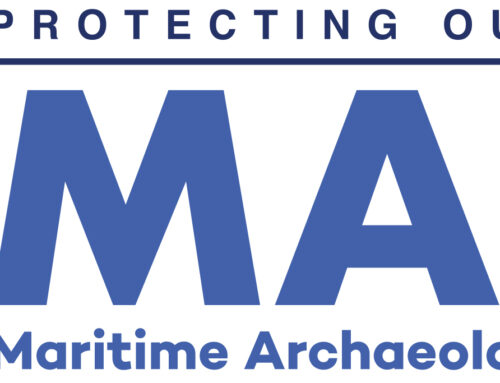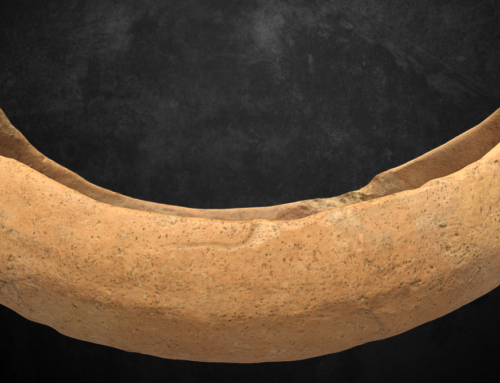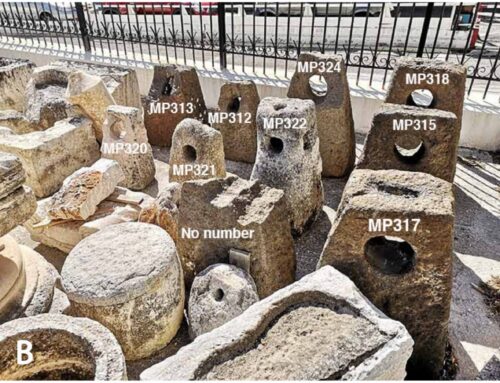DNA from the Wine-Dark Sea – 2017
Lisa Briggs

Methodology
Travel to Cyprus and Croatia allowed for the selection, collection and export of ceramic samples for analysis in this study. In the case of the Babuljaš shipwreck ceramics, it was possible to select samples directly from the seafloor during excavation. The samples from the Mazotos shipwreck consisted of previously excavated sherds, and a meeting at the artefact repository allowed for the selection of appropriate samples. This was also the case for the terrestrial ceramic samples from the Hellenistic site of Yeronisos, previously excavated sherds were reviewed and appropriate samples selected for export. In all cases, attempts were made to select ceramic sherds derived from vessels with which a certain commodity was strongly associated, e.g. amphorae thought to contain wine, amphorae thought to contain olive oil, ‘wine’ pitchers, unguentaria thought to contain unguents. These were selected in order to assess whether assumed contents were consistent with our molecular findings. Once all samples had been selected, approved for export, and safely arrived in the United Kingdom, the laboratory work began.

Organic residue analysis of 50 samples including destructive analysis of ceramic sherds, non-destructive analysis, and analysis of seafloor sediment was undertaken at the University of York, BioArch department. In addition to a solvent extraction protocol by DCM:MeOH which is well established and designed to recover lipids, the ceramics were also analysed by an alkaline fusion protocol developed by Guash-Jane et al (2004) and adapted by Pecci et al (2013) designed to recover the biomarkers of wine, primarily tartaric acid and syringic acid, among others (succinic acid, vanillin, etc).
Summary of results
Analysis of the data derived from the ‘deeper coverage’ in which 20 promising DNA libraries were subjected to further sequencing that would provide 20 million reads per sample (as opposed to the low coverage amount of 4 million reads per sample) is still ongoing. However, initial results suggest that the DNA recovered from the archaeological samples, both through destructive analysis and non-destructive swabbing, yielded only bacterial, fungal, and other environmental contaminant DNA. A vessel of known contents (amphora 426 from the Mazotos shipwreck known to have contained whole olives) did not yield any DNA that correlates with the known contents of olives. The results from the organic residue analysis, on the other hand illuminated several types of past vessel content from both the shipwreck and terrestrial ceramics. Plant oils were detected in several amphorae, two of which were assumed to have contained wine, and in one amphora assumed to have contained olive oil. Tartaric acid, considered the principle biomarker of wine, was detected in an unguentarium from the terrestrial site of Yeronisos, yet it was not detected in the several ‘wine’ pitchers included in this study, an intriguing result. Perhaps most significantly, small acids thought to be biomarkers of wine including syringic acid, succinic acid, and vanillin, among others, were detected in every sample of seafloor sediment included in this study, from the Mazotos shipwreck and the Babuljas shipwreck.

This research suggests that the ceramic matrix does not consistently retain DNA derived from past vessel contents. Organic residues are frequently retained, and it is through organic residue analysis that we are most likely to retrieve compounds and molecules that can provide insights into the types of commodities and foodstuffs transported inside shipwreck amphorae. Significantly, the discovery of ‘wine biomarkers’ in every sample of seafloor sediment included in this study, from both the shipwreck excavation area and adjacent natural seafloor calls into question our ability to securely use these compounds as biomarkers for wine on underwater archaeological sites, when they are virtually ubiquitous in the underwater deposition environment.
Future Research plans
While the ceramic matrix appears unlikely to retain ancient DNA derived from past vessel contents, there is still great promise for the preservation of endogenous DNA in shipwreck cargo items, such as grape seeds, olive stones, butchered beef bones and resins. Upon completion of my PHD at Oxford, I would like to continue my research on the ancient DNA of shipwreck cargo items. Further investigation into the ‘wine biomarkers’ in seafloor sediments is needed, and will be undertaken.





